I'm still having trouble understanding more complex proofs when determining if one function is big-o of another function, e.g. (f(n) = O(g(n)).
Example:
F(n) http://upurs.us/image/63058.gif
G(n) http://upurs.us/image/63059.gif
I realize that we want the proof to be satisfied under the conditions, S.T f(n) <= C1 * g(n) when n > b. I've watched countless tutorials and can't grasp this concept. In the listed example, how would I go about choosing the constant and using that information to finalize the proof? Thank you.


